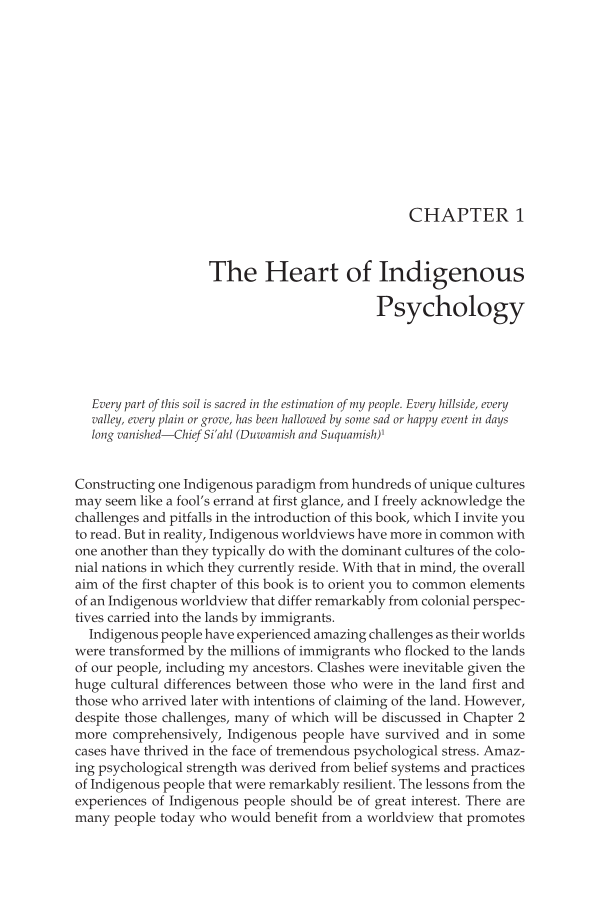CHAPTER 1 The Heart of Indigenous Psychology Every part of this soil is sacred in the estimation of my people. Every hillside, every valley, every plain or grove, has been hallowed by some sad or happy event in days long vanished—Chief Si’ahl (Duwamish and Suquamish)1 Constructing one Indigenous paradigm from hundreds of unique cultures may seem like a fool’s errand at first glance, and I freely acknowledge the challenges and pitfalls in the introduction of this book, which I invite you to read. But in reality, Indigenous worldviews have more in common with one another than they typically do with the dominant cultures of the colo- nial nations in which they currently reside. With that in mind, the overall aim of the first chapter of this book is to orient you to common elements of an Indigenous worldview that differ remarkably from colonial perspec- tives carried into the lands by immigrants. Indigenous people have experienced amazing challenges as their worlds were transformed by the millions of immigrants who flocked to the lands of our people, including my ancestors. Clashes were inevitable given the huge cultural differences between those who were in the land first and those who arrived later with intentions of claiming of the land. However, despite those challenges, many of which will be discussed in Chapter 2 more comprehensively, Indigenous people have survived and in some cases have thrived in the face of tremendous psychological stress. Amaz- ing psychological strength was derived from belief systems and practices of Indigenous people that were remarkably resilient. The lessons from the experiences of Indigenous people should be of great interest. There are many people today who would benefit from a worldview that promotes
Document Details My Account Print multiple pages
Print
You have printed 0 times in the last 24 hours.
Your print count will reset on at .
You may print 0 more time(s) before then.
You may print a maximum of 0 pages at a time.




















































































































































































































































































